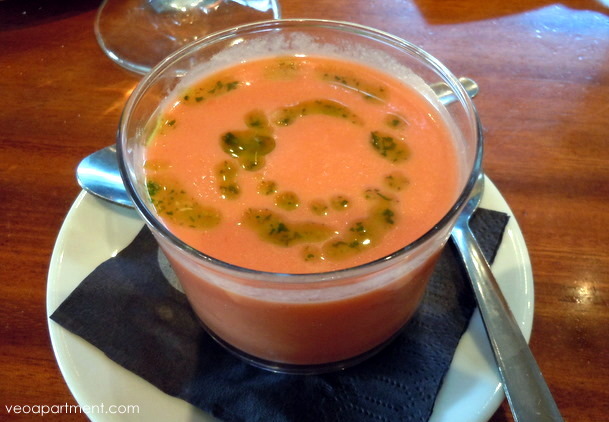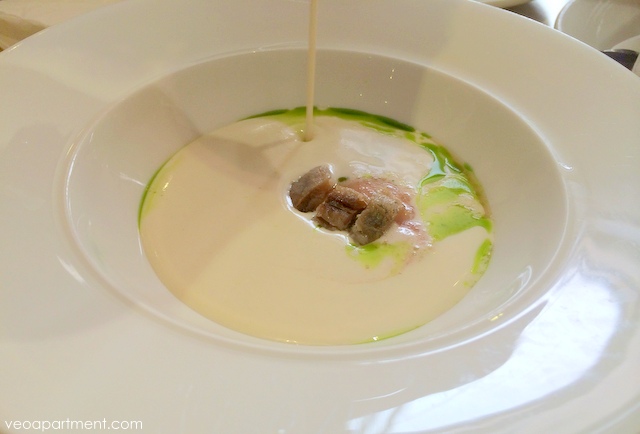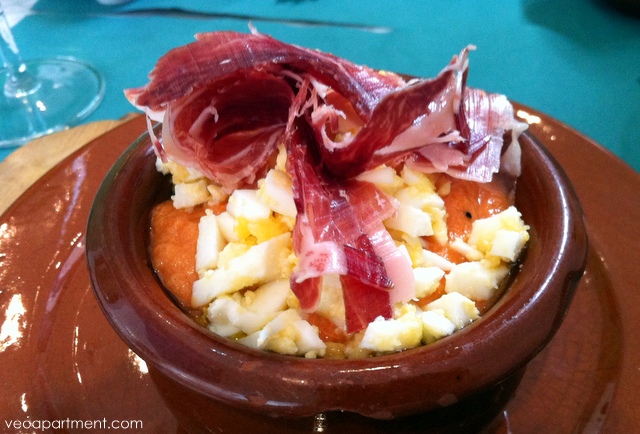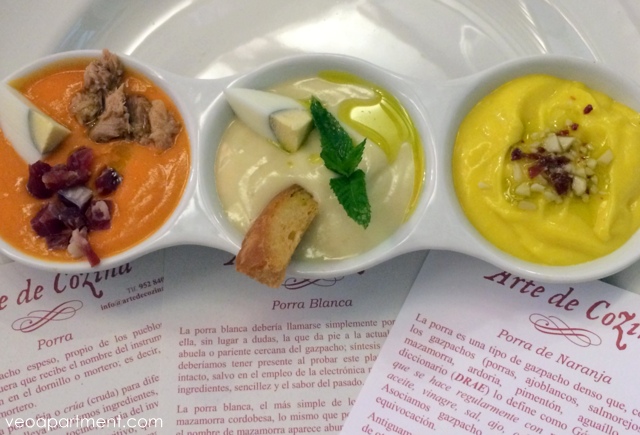Summer is the time when Spanish cooking is all about food that is light and refreshing, and this is when the traditional Spanish cold soups come into their own. The best known of these is gazpacho, which is one of a family of tomato based soups that includes salmorejo and porra, as well as other local variations, but although nowadays tomatoes are often perceived as the most important ingredient, this isn’t really true. The origins of the dish go back to before the discovery of America, and consequently of tomatoes and peppers, both products of the New World. This would leave us with something closer to ajoblanco (cold garlic and almond soup), the other common Spanish cold soup, but without the almonds.
 gazpacho
gazpacho
We can then see that we start in early medieval times with a soup of water, dry bread, olive oil, garlic and vinegar (this indicates a possible Roman origin, as vinegar was important in their cuisine, but not in the Moorish cuisine that followed it), to which were added any leftover vegetables, or less commonly, meat or fish. The basic preparation method was to soak the bread, and to mash it up with the garlic and other vegetables while adding the oil and vinegar to make a paste.
This proto-soup becomes ajoblanco with the addition of peeled, blanched and crushed almonds, which results in a thick, creamy white soup that makes a refreshing change from the tomato varieties. Almonds came to Spain with the Moors, and ajoblanco is generally held to have originated in Malaga and Granada, their last strongholds.
 ajoblanco
ajoblanco
The arrival of tomatoes from the Americas in the early 16th century gave impetus to the evolution of the cold tomato soups that we are familiar with today. Since Sevilla was the port of entry, and the valley of the River Guadalquivir proved perfect for their cultivation (the tomatoes of Los Palacios are renowned for their size and taste, and figure prominently in the displays of the local markets), it’s not surprising that these soups are closely connected with this region of Andalucia, and were, in fact, little known outside this region until the 19th century.
 salmorejo
salmorejo
The differences between the varieties are mostly about the thickness of the soup, and its additional ingredients, and the localities they are associated with. Gazpacho, traditionally associated with Seville ,uses less bread and olive oil, resulting in a thinner mix, and adds more vegetable ingredients, particularly cucumber, but also peppers and onions. Croutons and chopped cucumber and pepper are often added as a garnish.
Salmorejo is thicker and creamier than gazpacho, and is often used as a sauce (one of my favourite tapas is a carpaccio of salt cod topped with salmorejo). A wide range of extra ingredients, such as beetroot, melon and avocados, may be added, and bars specialising in varieties of salmorejo, such as Umami in Cordoba (the official hometown of salmorejo), have started to appear. In Úbeda I even came across a variety for the gluten intolerant that replaced bread with green apples – and very tasty it was too. Usually comes with a garnish of quartered hard-boiled eggs and chopped ham.
 porra
porra
Porra (the word literally means a club, and may refer to the mortar and pestle used to grind up the ingredients) is the thickest of all, with extra breadcrumbs and red or green peppers. Tuna is a popular garnish.
Below are some sample recipes from About.com.
Continue reading